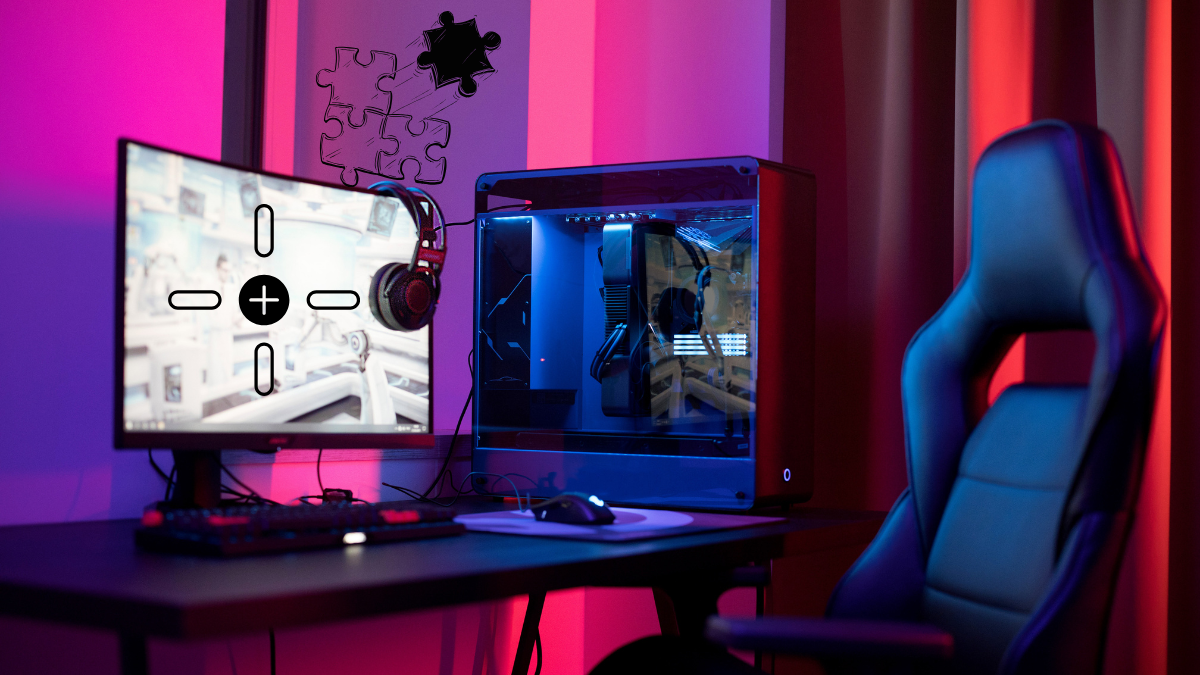Top Strategies to Boost FPS in Games Without Upgrading Your PC
Enhance In-Game Configurations
The in-game settings menu should always be your first port of call if you want to increase the frame rate of your favorite games without investing in new hardware. These settings have a direct impact on how hard your computer must work, and even minor adjustments can result in significant performance improvements. A lot of professional esports players set their settings to low to get a stable FPS during the games, even with the new and expensive hardware. You can check out their performance on live streams of esports events by PinUp.

Playing at native resolution can be very taxing on your system, even though it looks nice. Frame rates can be greatly increased by lowering your resolution from 1080p to 900p or even 720p. The smoother gameplay usually makes up for the slight blurriness it may cause.
2. Select the Appropriate Graphics Preset
Presets like Low, Medium, High, and Ultra are pre-installed in the majority of games. Start with Medium or Low if you want a high frame rate, and only increase individual settings if you see consistent performance.
3. Turn off or restrict V-Sync
Although V-Sync can stop screen tearing, it frequently causes input lag and may limit your frame rate to match the refresh rate of your monitor. If your GPU supports it, try turning it off or using settings like “Enhanced Sync” for AMD or “Fast Sync” for NVIDIA.
4. Reduce Texture and Shadow Quality
These two environments are frequently the most taxing. Resources can be rapidly freed up by reducing texture resolution, draw distance, and shadow quality. For a visually appealing game without sacrificing performance, medium or low settings are typically sufficient.
5. Diminish or Turn Off Preventing Aliasing
Although anti-aliasing smooths out sharp edges, it can consume a significant amount of GPU power, particularly in more advanced forms like MSAA or TAA. Set this to Low or disable it completely if you’re having trouble with FPS. A little more jagginess may be noticeable, but your frame rate will appreciate it.
6. Reduce the Impact of Post-Processing
Film grain, depth of field, motion blur, and ambient occlusion are examples of cinematic effects that enhance games’ visual appeal but don’t significantly improve gameplay. The best way to get more FPS in games without significantly compromising your experience by turning these off or lowering them.
Adjust Background Processes & System Configurations
System-level inefficiencies can still hinder your PC’s performance even after you’ve optimized the in-game settings. You can get more frames without spending any money by adjusting Windows settings, updating drivers, and controlling background processes.
1. Maintain Up-to-Date GPU Drivers
- Stability problems and poor performance can result from outdated graphics drivers. Regular updates from AMD and NVIDIA improve performance for new games and address bugs.
- Users of NVIDIA: Visit the NVIDIA website or GeForce Experience to download the most recent drivers.
- AMD users: Go to the AMD driver page or use AMD Adrenalin.
- Users of Intel Arc: Update through the Intel support website or Intel Arc Control.
- To prevent conflicts with outdated driver files, always choose “Clean Install” when updating.
2. Turn on Windows Game Mode and adjust the power settings.Gaming performance can be prioritized with the help of built-in features in Windows.
Mode of Play:
- To access the Game Bar, press Win + G.
- Make sure Game Mode is enabled by going to Settings > Gaming > Game Mode.
- This gives your game more resources and stops Windows from performing background updates.
Plan of Power:
- Go to Control Panel > Sound and Hardware > Power Settings.
- If “High Performance” or “Ultimate Performance” are options, choose them.
- Steer clear of “Power Saver” and “Balanced” as they restrict CPU and GPU performance.
3. Disable startup programs and close background apps.
- FPS decreases can result from unnecessary background processes stealing CPU, RAM, and disk usage.
- Using the Task Manager Method (Ctrl + Shift + Esc):
- Navigate to the “Processes” tab and exit programs such as streaming software, browsers, and Discord overlays.
- Examine the “Startup” tab and turn off any apps that start up automatically, such as Skype, Spotify, and Steam.
- Method for Windows Settings:
- Disable any apps that aren’t needed by going to Settings > Apps > Startup.
4. Clear Out System Clutter and Temporary Files
Junk files and fragmented storage can cause your system to lag over time.
Cleaning up the disk:
- In the Windows search bar, type “Disk Cleanup.” Then, choose your primary drive and remove any temporary files.
- Defragmentation (only for HDD users):
- Look up “Defragment and Optimize Drives,” pick your HDD (not an SSD), and press “Optimize.”
SSD Optimization (Trim Command):
Windows initiates TRIM automatically if you have an SSD, but you can manually initiate it by typing the following into the Command Prompt (run as admin):
Copy the behavior set for fsutil. Turn off DeleteNotify 0.
You can cut down on needless overhead and make sure your computer uses as much power as possible for gaming by implementing these system adjustments.

Utilize Advanced and Game-Specific Tools
You can improve your gaming performance even more by using specific tools and strategies after you’ve optimized your system and in-game settings. These sophisticated techniques can produce remarkable FPS increases without requiring hardware upgrades, but they do require a little more technical expertise.
1. Guides to Game-Specific Optimization
Certain games offer special optimization possibilities that general guides might overlook:
Look into game-specific adjustments: There are devoted communities for a lot of well-known games that list configuration file edits and hidden settings that can significantly boost performance.
Editing configuration files by hand can enable more performance options not found in the settings menu for games like Fortnite, Valorant, or CS. Search for “autoexec.cfg” files or comparable configuration files.
Overclocking boosts performance by pushing your hardware beyond factory settings, but it must be done carefully:
Basics of GPU overclocking:
- Start with modest increases (e.g., +100MHz memory clock, +50MHz core clock).
- After every modification, test stability using benchmarks.
- Keep an eye on temperatures; for most GPUs, keep them below 85°C.
- If you notice any crashes or artifacts, move away right away.
Considerations for CPU overclocking:
- Try only when there is sufficient cooling.
- Access through specialized software or BIOS/UEFI
- Pay attention to the voltage and core multiplier.
- Use stress-reduction tools such as Prime95 to test.
Overclocking memory (RAM):
- For a quick boost, enable XMP/DOCP profiles in the BIOS.
- For more experienced users, manual timings can yield additional benefits.
3. Software Tools for Manufacturers
Manufacturers of GPUs provide software that can easily enhance your gaming experience:
Experience with NVIDIA GeForce:
- The “Optimize” feature automatically sets up the optimal configuration for your particular hardware.
- ShadowPlay allows for recording with little effect on performance.
- In competitive games, game filters can increase visibility.
Adrenalin software from AMD:
- In order to conserve power, Radeon Chill limits frame rates during periods of low activity.
- Input latency is decreased by anti-lag.
- When moving quickly, Radeon Boost dynamically reduces resolution to increase frame rate.
Arc Control by Intel:
- Options for performance tuning
- Integrated optimization suggestions
- Management of driver updates
4. Software for Third-Party Performance
A number of specialized apps can help you optimize your system for gaming:
The MSI Afterburner
- The benchmark for GPU overclocking
- Personalized fan curves to balance cooling and noise
- Real-time performance monitoring via an on-screen display
- The ability to record videos with little effect
The Razer Cortex
- The Game Booster function momentarily halts pointless system operations.
- Temporary files are deleted by the system cleaner.
- RAM usage is optimized through memory defragmentation.
Lasso Process:
- gives games a higher CPU priority.
- Stops CPU throttling
- automatically controls background processes
RivaTuner Statistics Server, or RTSS:
- Often more effective than in-game options is frame rate limiting.
- combines with Afterburner to provide thorough monitoring.
- keeps the frame rate constant, which lessens micro-stuttering.

You can significantly increase your frame rate without purchasing new hardware by combining these sophisticated strategies with the system and in-game optimizations discussed in the earlier sections. To make sure your system stays dependable while providing smoother gameplay, keep in mind to apply changes gradually and test stability after each modification.


